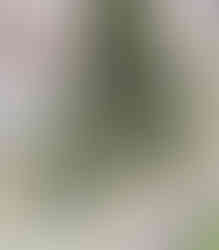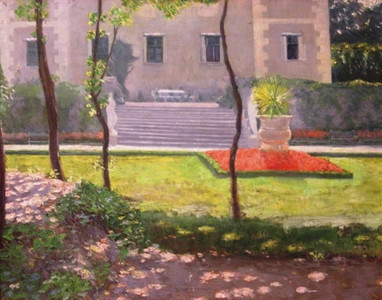Lenore Bach
- emiliemalmgren
- Feb 20
- 4 min read
A talented singer and painter, she was at the centre of Viennese cultural life at the turn of the 20th century. In her Sunday salons, she brought together Austrian and international musicians and artists and played an important, even if forgotten, part in the network of Jugendstil Vienna.

Eleonore Josepha Maria Theresia Auguste Bach was born in Salzburg on the 21st of April 1869. Her parents, Otto and Therese Bach, were both professional musicians and music would come to define her life as she grew up.
Dr. Otto Bach (1833-1893) was Kapellmeister, conducter and director of music, of the Salzburg Cathedral and director of the Mozarteum. He was also a composer and no doubt his opera Leonore from 1874 was named after his daughter. Therese (1827-1884), née Janda, was a professional opera singer and pianist whose employers counted the likes of the Vienna Court Opera and the Hannover Court Theatre. She taught singing at the Vienna Conservatory and, like her husband, was a composer. Otto and Therese would also collaborate, for instance on the work "Katharinen-Quadrille für Großes Orchester", which Therese composed and Otto orchestrated.
In 1880, when Lenore was 11 years old, Otto became the Kapellmeister of Vienna’s Votiv Church and the family relocated to the flourishing imperial metropolis. At this time, many of the city’s landmarks along the famous Ringstraße, such as the monumental natural and art history museums and the impressive city hall, were being completed. The privileged upper classes of Vienna spent their days in coffee houses and their nights waltzing at lavish balls and frequenting the rich music scene, earning the city the title of ‘City of Music’.

Art and Music
Growing up in a musical home and spending her youth in the ‘city of music’, it’s no wonder that Lenore became a skilled soprano and oratorio singer herself, performing many times in the most important concert hall in Vienna — the golden great hall of the Vienna Musikverein. It’s likely that she was educated by her parents and private tutors, but we have yet to find conclusive sources about her education.
Lenore was not only an accomplished singer, but also a talented painter. The contemporary art historian Josef Strzygowski described her in an exhibition review: “Baroness Lenore Bach, intoxicated by the lush greenery that plays between sun and shade”, referring to the impressionistic landscape motifs that make up the majority of her work. In January 1913, she exhibited two of these works in the Vienna Secession. Both of these paintings were sold and, according to Lenore’s daughter, Maria, one of them was hung in the famous Hotel Sacher. Maria also described Lenore’s vigorous painting practice: she would simply strap her painting equipment to her bike and ride to out to paint.
Marriage and later life
In 1890, Lenore married her cousin Robert Bach and one year later, their first daughter Therese was born. Three more daughters, Katharina, Maria and Henriette, followed in 1892, 1896 and 1903. The marriage to Robert was loving and, sharing the interest in the arts, they encouraged each other’s practice just like Lenore’s parents had done. Maria described how her parents would paint, play music and frequent the circles of Vienna’s cultural elite. The couple hosted Sunday salons in their home Schloss Leesdorf and Schloss Braiten where they, and their guests, would play chamber music and discuss the latest developments in culture. The guests included musicians and artists alike: Johannes Brahms, Gustav and Alma Mahler, Arthur Nikisch, Gustav
Klimt, Oskar Kokoschka, Ferdinand Hodler, Akseli Gallen-Kallela and Richard and Elena Luksch- Makowsky are just some of the guests who attended the Bach Sunday salon.

Legacy
When Robert died in 1927, his estate was split between Lenore and the four daughters. Lenore moved to an apartment in Vienna, where she would live until financial difficulties forced her to sell it and auction off most of her furniture in 1936. She then moved to the family hotel, Tulbinger Kogel, where she lived the rest of her life rather secluded. She died in Vienna in 1939. Lenore’s work has long been forgotten — her paintings remained on display in the family collection but were never exhibited again. Today, the Collection Renner-Lanjus is actively researching and mapping the network and position of the Bach family in fin-de-siècle Vienna and making the works accessible to the public.

Sources:
Bach, Maria. Blitzlichter aus meinem Leben. 1972.
Böhm, August Edlen von Böhmersheim. Geschichte des Singvereines der Gesellschaft der musikfreunde in Wien; festschrift zum fünfzigjährigen Singvereins-jubiläum, Adolf Holzhausen k.u.k. Hof und Universitäts-Buchdrucker, 1908.
Hopkins Porter, Cecelia. “Maria Bach: Vienna from Imperial Splendor to the Second Republic” in Five Lives in Music, University of Illinois Press, 2012.
Strzygowski, Josef. “Feuilleton. Sezession”, Die Zeit, 1.2.1913, pp. 1–2.
Original quote: “Baronin Lenore Bach, die sich berauscht an dem saftigen Grün, das zwischen Sonne und Schatten spielt”.
Wien Geschichte Wiki. Otto Bach. https://www.geschichtewiki.wien.gv.at/Otto_Bach (17.2.25)




